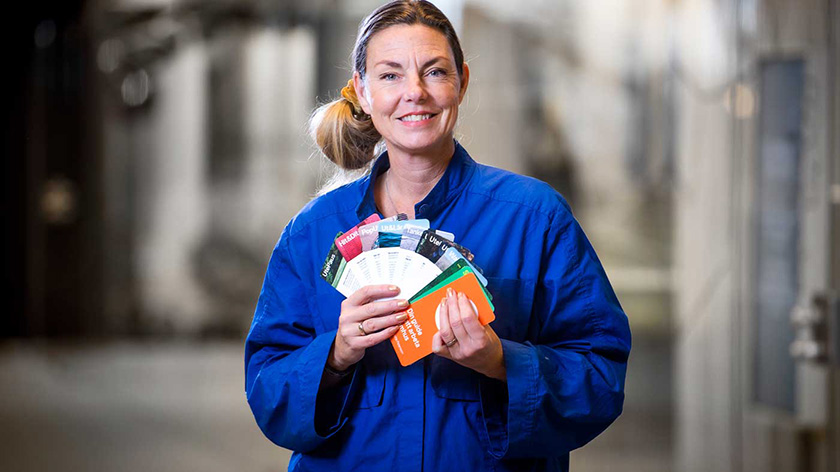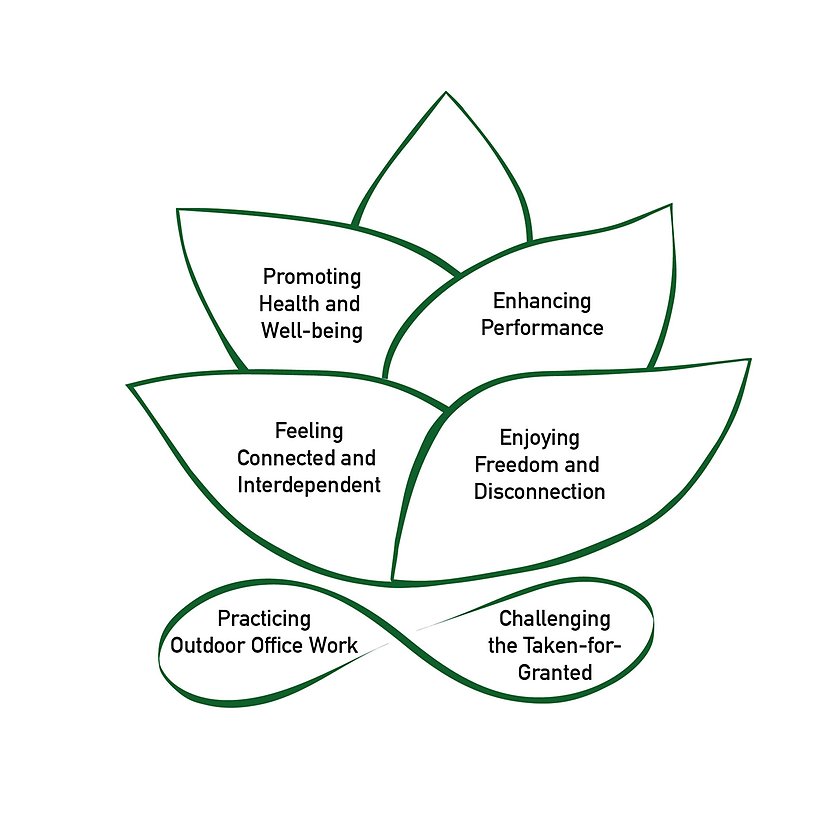Her research turns perceptions of what work is on their head

“Participants in my studies highlight that they feel better, recover better, can focus more easily, and experience better communication and social relationships. On the whole, all this is positive. But they also highlight feelings of guilt and illegitimacy, that it doesn't feel like they are “really” working when they work outdoors," says Charlotte Peterson Troije. Photo: Jonas Bilberg
Why don't we work outdoors more often? The benefits of moving office work outdoors are many; especially those linked to health, wellbeing, learning and creativity. Despite this, most people who work in offices remain seated indoors in front of their screens. This is something that Charlotte Peterson Troije wishes to change.
On 17 May she will publicly defend her doctoral thesis called Turning Work Inside Out. Exploring Outdoor Office Work – the first thesis ever that concerns outdoor offices and working outdoors.
Tell us more about your thesis
"I am looking into the possibilities for people to bring the outdoor environment into everyday life simply by doing office work outdoors. Through various research projects, I have investigated how it is possible to create opportunities for office work outdoors. For instance, I have looked at this in the interactive research project 'StickUt Malmö', the Danish project 'Pop Out!' and through an interview study in the context of the 'Concept for the Sustainable Offices of the Future' project (SOFCO)."
What kind of things do people who take their office work outdoors experience?
"The participants in my studies emphasise that they feel better, recover better, can focus more easily, and experience better communication and social relationships. Overall, this is really positive. But they also highlight feelings of guilt and illegitimacy, that it doesn't feel like they're working 'for real' when they work outdoors," says Charlotte Peterson Troije and continues:
"Here, it is of course very important to see what conditions exist in both the physical environment and in the organisational culture. It’s especially important that when it comes to organisational culture, the attitudes of heads of unit and management towards outdoor office work (OOW) play a part, but also attitudes towards empowerment and trust in employees in general.”
”The Lotus of Outdoor Office Work”
Charlotte Troije Pettersson has also developed a model that illustrates the perceived benefits and challenges of Outdoor Office Work; "The Lotus of Outdoor Office Work".
The model displays challenges and pushes the boundaries of outdoor office work. On the one hand, it promotes health, wellbeing and recovery, on the other hand, it challenges the norm around office work, and what is taken for granted.
It also highlights what people who regularly work outdoors perceive as positive; contact with nature, that they experience improved relationships, a higher degree of wellbeing and health, but also improved performance at work and a greater degree of freedom.
What is it that allows outdoor office work to function?
"There are some key aspects of the physical environment that are relevant for you to experience to show that it is possible to do office work outdoors. For example, it should be simple, feel safe and be perceived as comfortable (such as providing protection from the weather and wind). The main challenges are mostly due to digital dependency and the fact that it is not considered to be legitimate or approved according to established norms or rules to work in an outdoor office," says Charlotte Petersson Troije.
Turning ideas about work on their head
To summarise, Charlotte Petersson Troije believes that Outdoor Office Work is a relevant and sustainable way to improve working life. The concept addresses the stress and ill-health that many people experience in working life today. However, there are challenges, such as the need for outdoor environments that support this approach and organisational cultures that value trust, credibility and self-management.
"The biggest challenge lies in society's norms which concern that "real" work is done in front of a screen, which in turn reinforces the belief that office work is incompatible with physical activity. Here, Outdoor Office Work turns ideas of what work really is upside down, and accordingly reveals that only certain activities are traditionally recognised as "work," she concludes.
- Link to Charlotte Peterson Troijes doctoral thesis: Turning Work Inside Out : Exploring Outdoor Office Work (diva-portal.org)
 External link, opens in new window.
External link, opens in new window.

Charlotte Troije Pettersson has also developed a model that illustrates the perceived benefits and challenges of Outdoor Office Work; "The Lotus of Outdoor Office Work".
Contact Information
